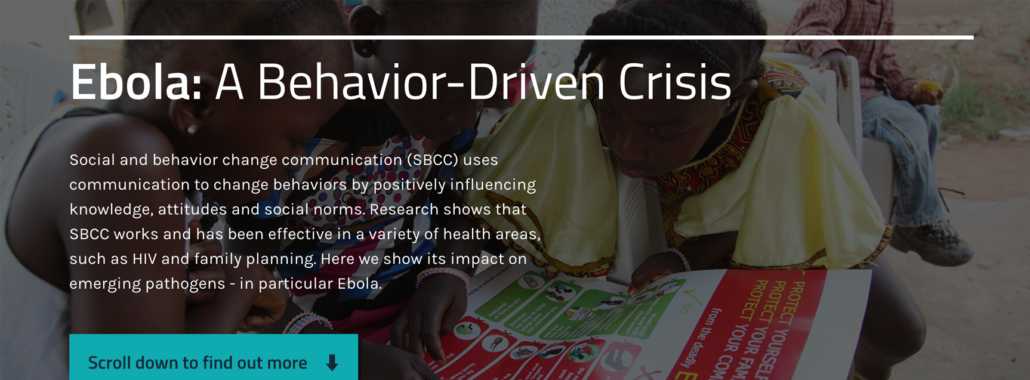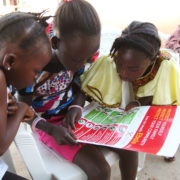Ebola: A Behavior-Driven Crisis
Social and behavior change communication (SBCC) in the context of a public health crisis is the focus of a web-based multimedia package just released by the Health Communication Capacity Collaborative (HC3).
Ebola: A Behavior-Driven Crisis is a multimedia retrospective on the role communication played during the Ebola crisis in Liberia. Using animation, maps, video and audio clips as well as narrative text and featuring original communication materials in a gallery-style format, the digital resource demonstrates how SBCC can help combat rumors and misinformation, provide answers from trusted sources, calm fears, bring together stakeholders for a coordinated response and combat stigma.
Video interviews with HC3’s Liberia team in Monrovia recollect their work with Liberian Ministry of Health officials and partners on the ground and help show the trajectory of the crisis and evolution of messaging and materials development. First-person accounts of a coordinated response are featured from Reverend John Sumo, Director of the National Health Promotion Division of the Liberian Ministry of Health; Mettie Roberts, Mental Health Clinician, Carter Center; Dorfelson Jayguhwoi, District Health Officer, Ministry of Health, Voinjama District, Lofa County; and Juli Endee, Cultural Ambassador and Executive Director, Liberia Crusaders for Peace.
SMS-based research used during the crisis (advantageous for rapid data collection and analysis as well as eliminating the need to send researchers door-to-door) is highlighted, as well as the results of that research which helped formulate messaging and communication strategies. DeySey, the rumor-tracking initiative conducted by HC3 partner Internews is described in an interview with Ben Togbah Jr., a radio reporter for Radio Joy Africa Kakata in Margibi County.
A gallery of communication materials developed for Ebola is highlighted as is a gallery of materials for the current public health challenge – Zika.
Emerging pathogens continue to challenge public health experts. In the absence of a vaccine, communication is an effective tool to address behavior-related aspects of transmission. Please share this link within your communication networks, or post links to specific sections via social media sharing tools embedded on the site.








Leave a Reply
Want to join the discussion?Feel free to contribute!